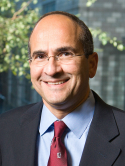| Abstract: |
Background: Although rates of microvascular thrombosis following free-flap breast reconstruction are low, debate persists about the optimal methods to restore blood flow and prevent ensuing flap shrinkage or fibrosis. Here we evaluate our management of microvascular compromise, including both a review of our approach for restoring blood flow and addressing the ensuing inflammatory changes following ischemia reperfusion. Methods: We conducted a retrospective review of autologous free tissue transfer breast reconstructions from 1/2010 to 1/2020. Patients who had flaps requiring take-back for salvage were identified. Management of microvascular compromise and ischemia reperfusion injury were recorded. Results: Of 2103 flaps were used in the breast reconstructions, 47 flaps required take-back for microvascular compromise (2.2%). Most flaps were either completely salvaged (n = 29, 61.7%) or partially salvaged (n = 5, 10.6%). Thirteen (27.7%) were a total flap loss, for an overall rate of 0.8% (including 3 flaps with no salvage attempt). Management of microvascular compromise most often included revision of the anastomosis (n = 33, 70.2%), thrombectomy (n = 27, 57.4%), tissue plasminogen activator administration (n = 26, 55.3%), and vein grafts (n = 18, 38.3%). Management of ischemia reperfusion included intraoperative steroids (n = 33, 70.2%), postoperative steroids (n = 17, 38.6%), and postoperative therapeutic anticoagulation (n = 27, 61.3%). Of 34 salvaged flaps, 5 (14.7%) had partial flap loss and/or fat necrosis on clinical examination at an average follow-up of 2.7 ± 2.8 years. Conclusions: Salvage of microvascular compromise in autologous breast reconstruction should include restoration of blood flow and management of ischemia reperfusion injury. Attention to both is paramount for successful outcomes. © 2021 Wiley Periodicals LLC. |












